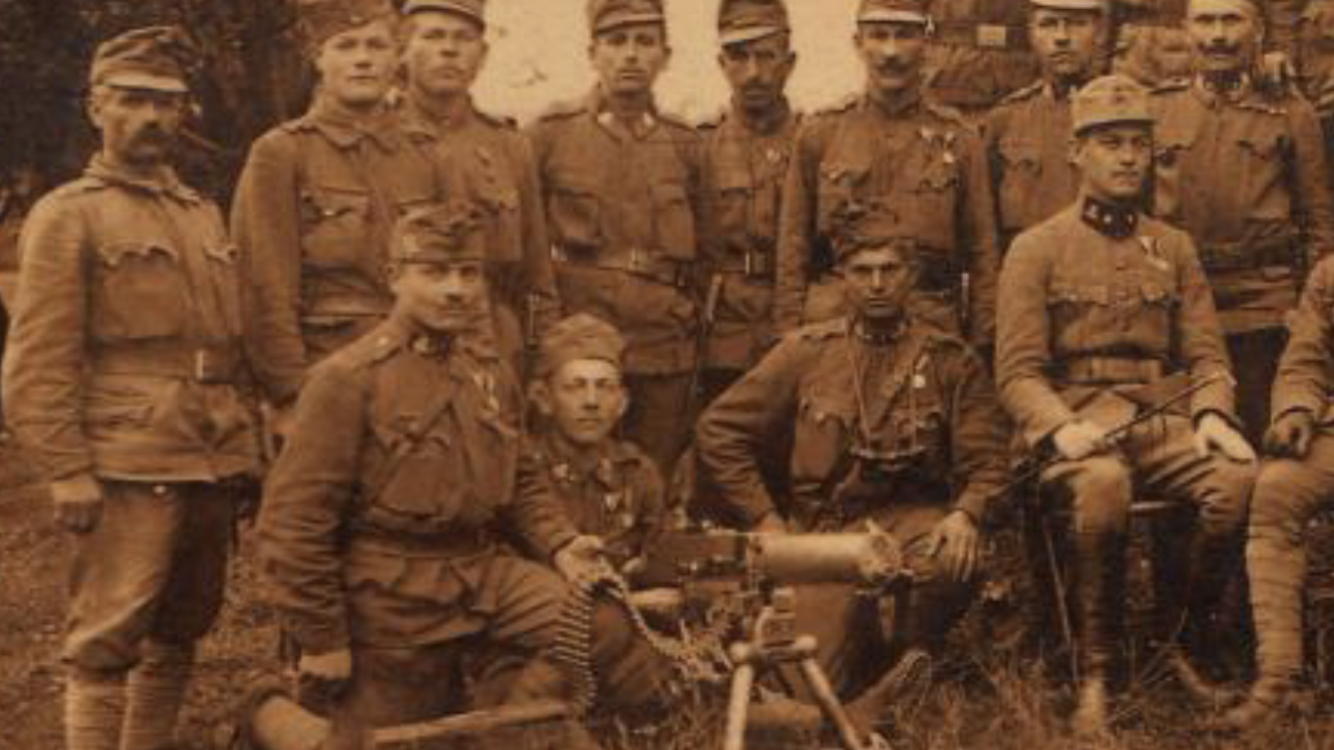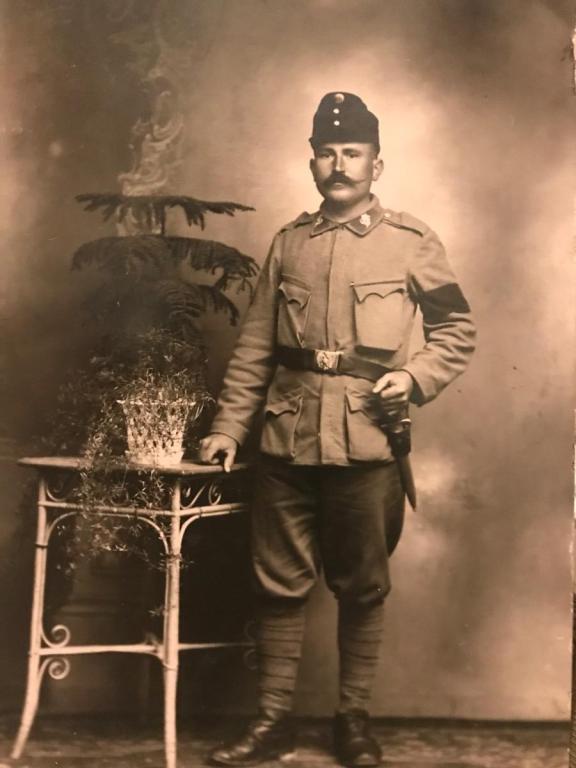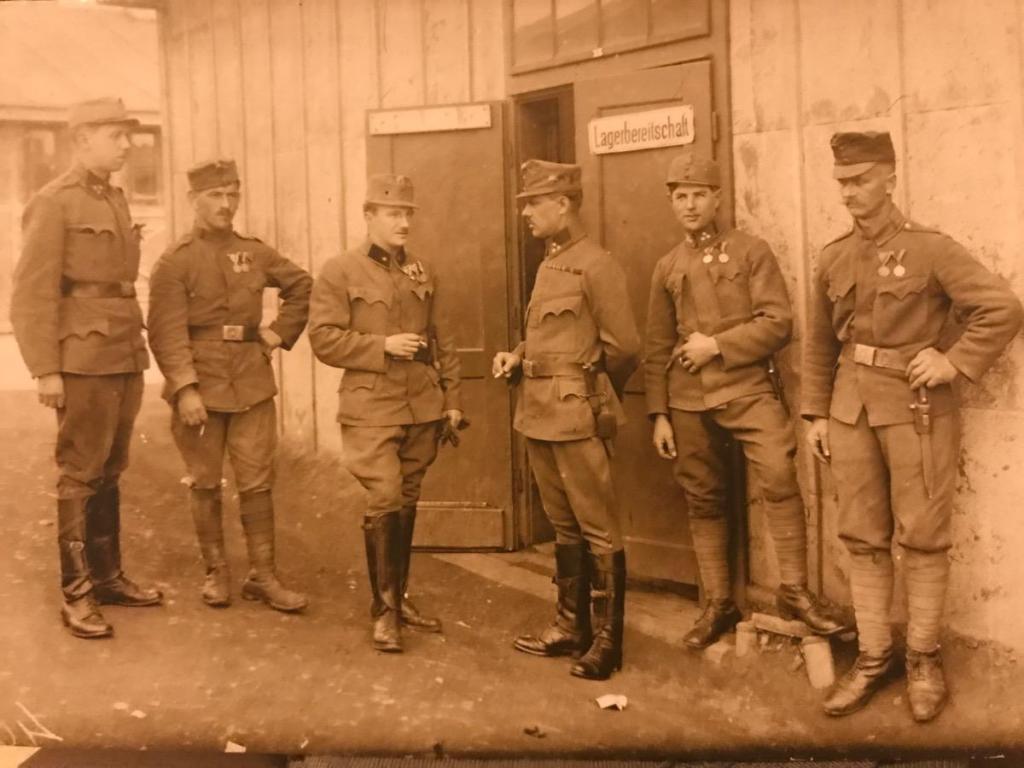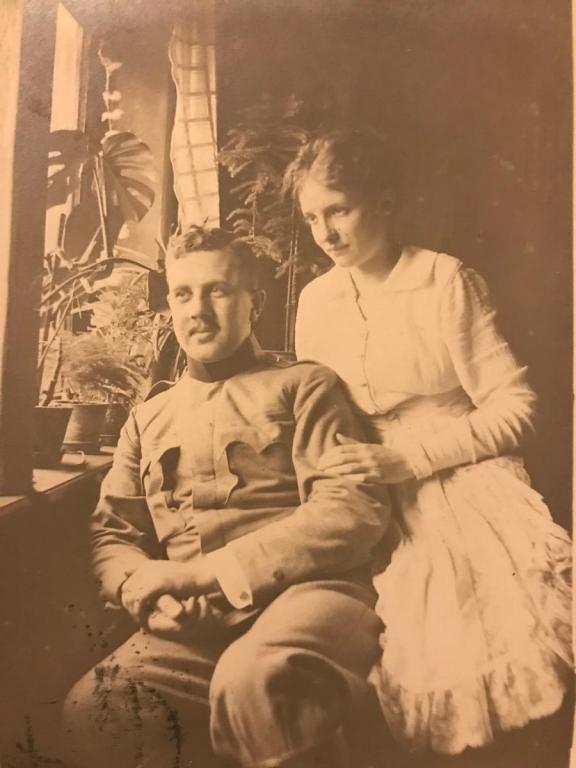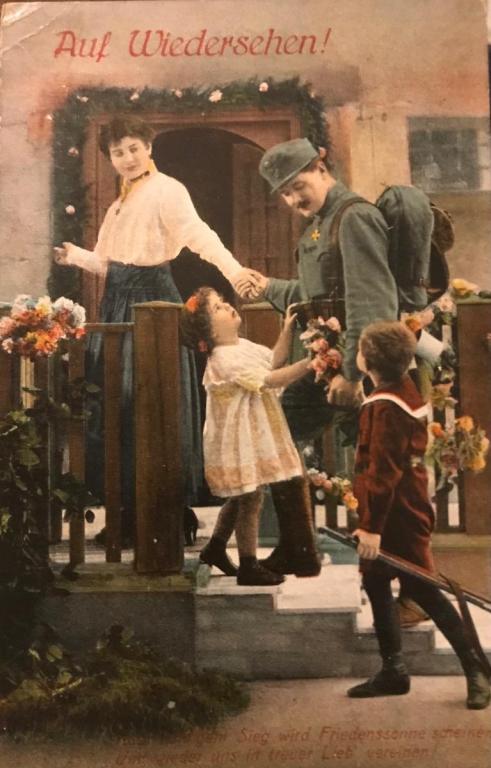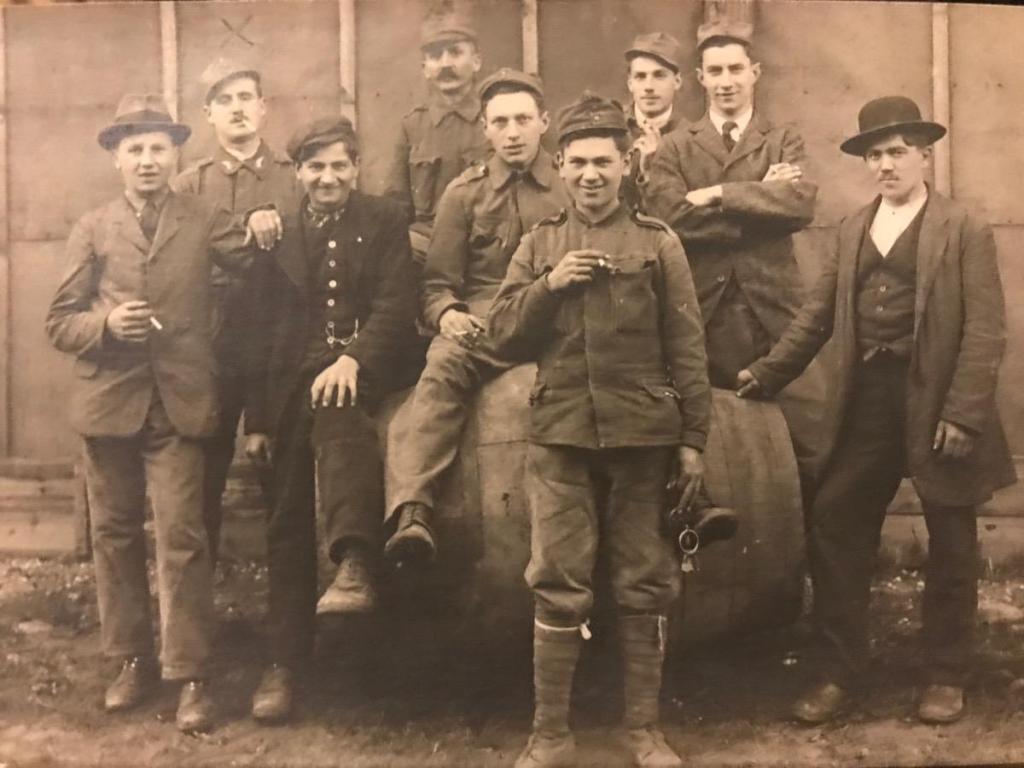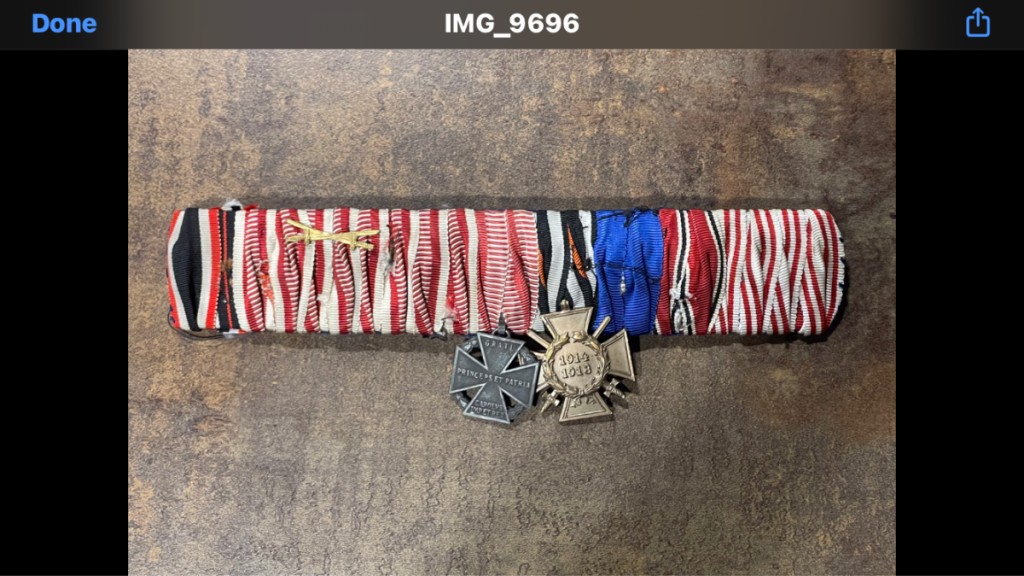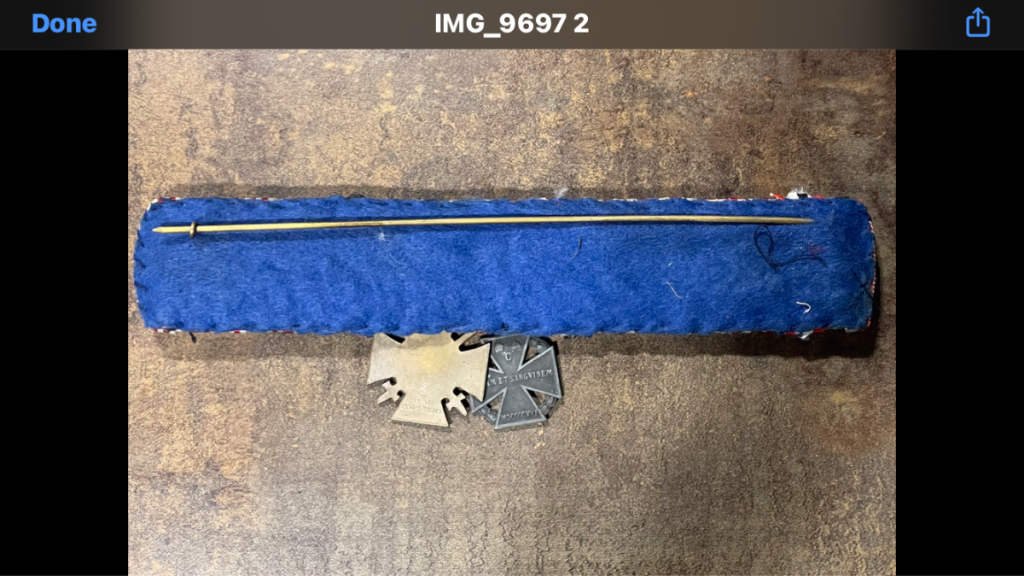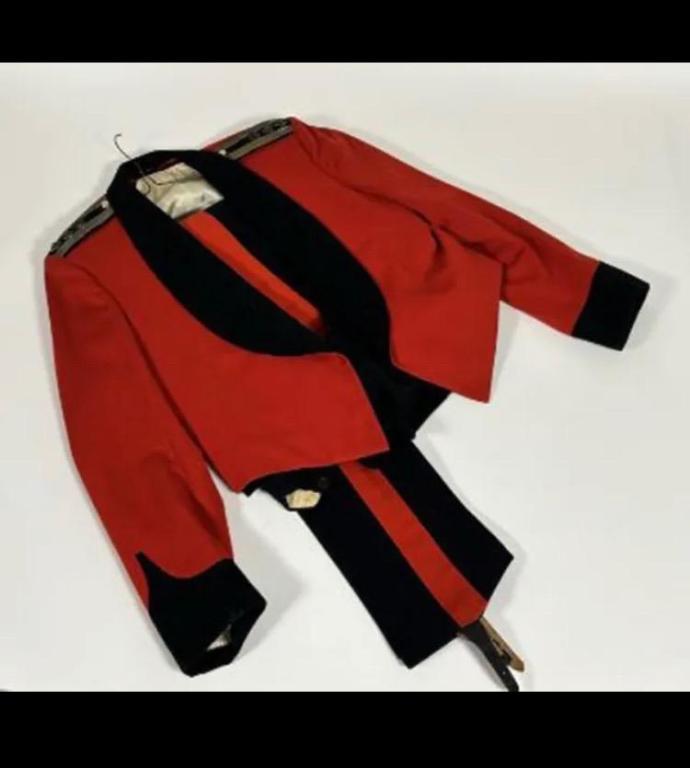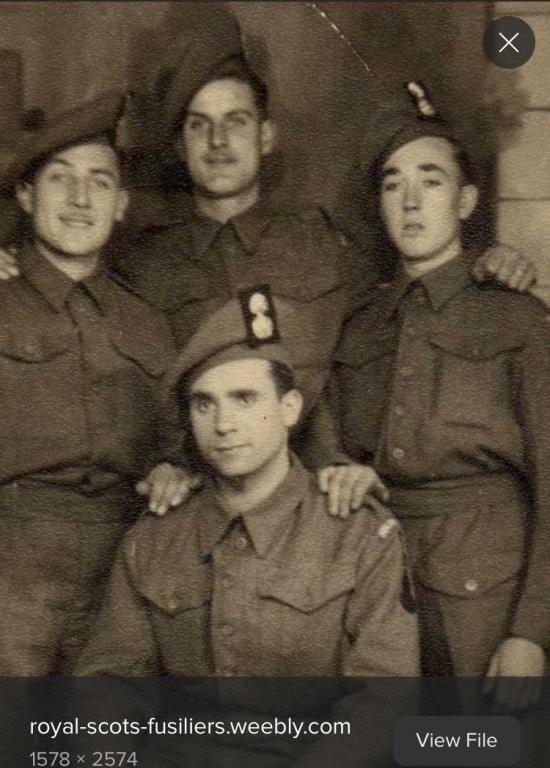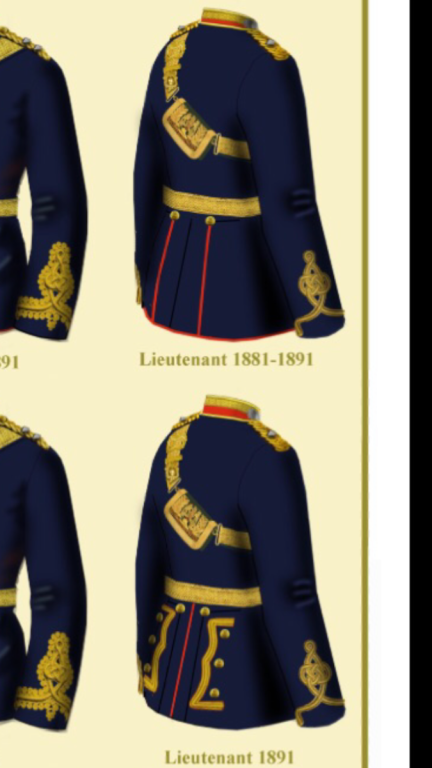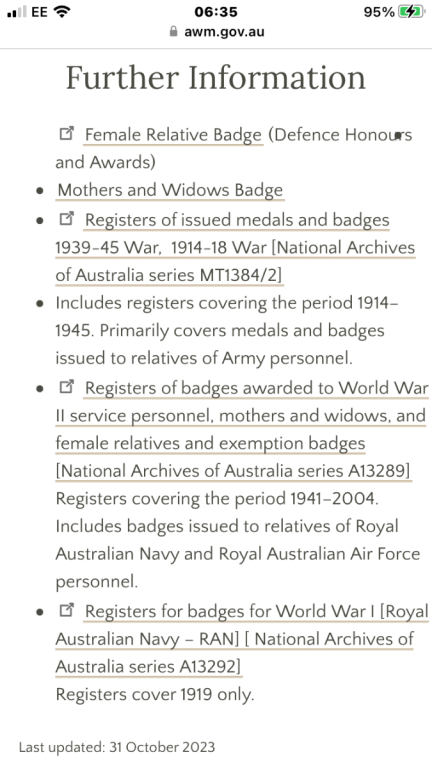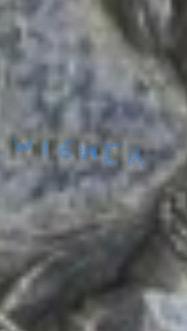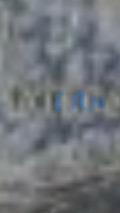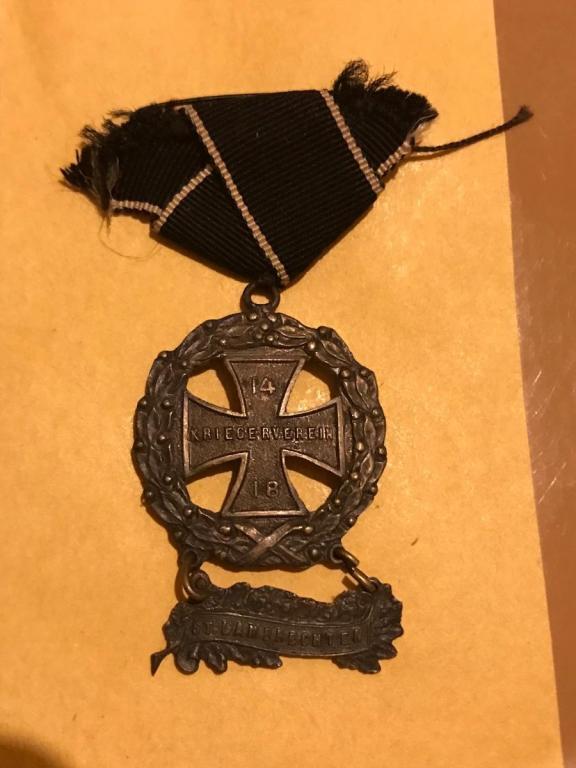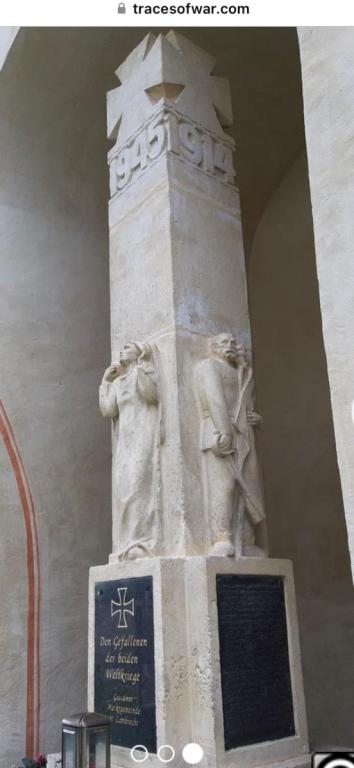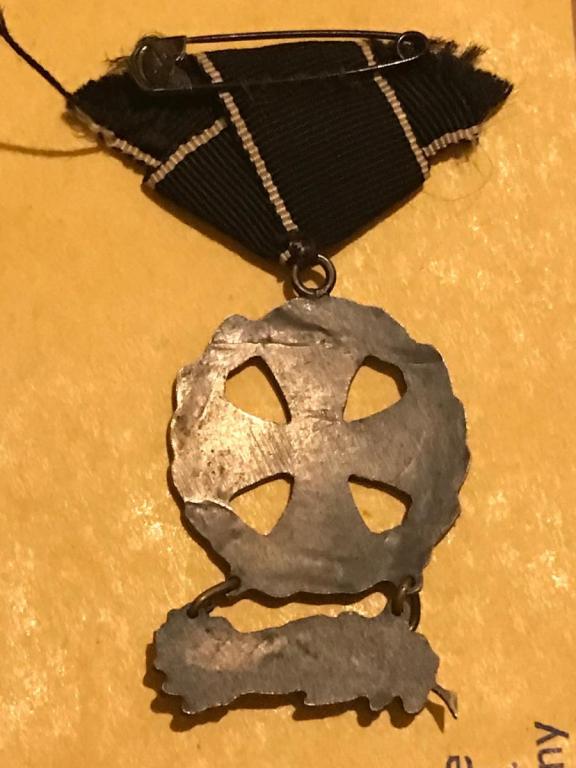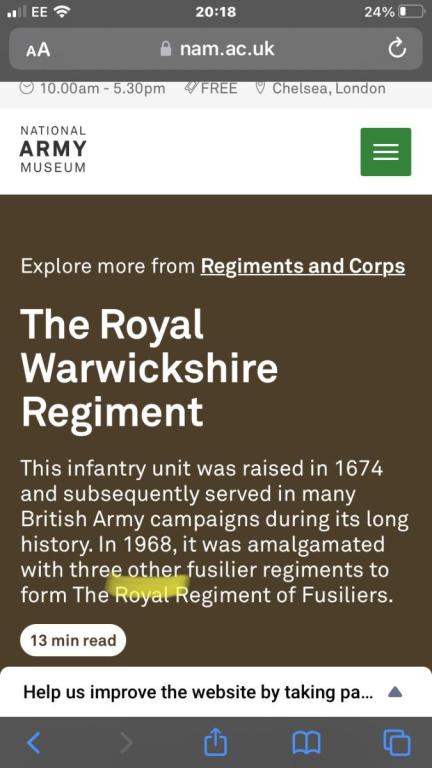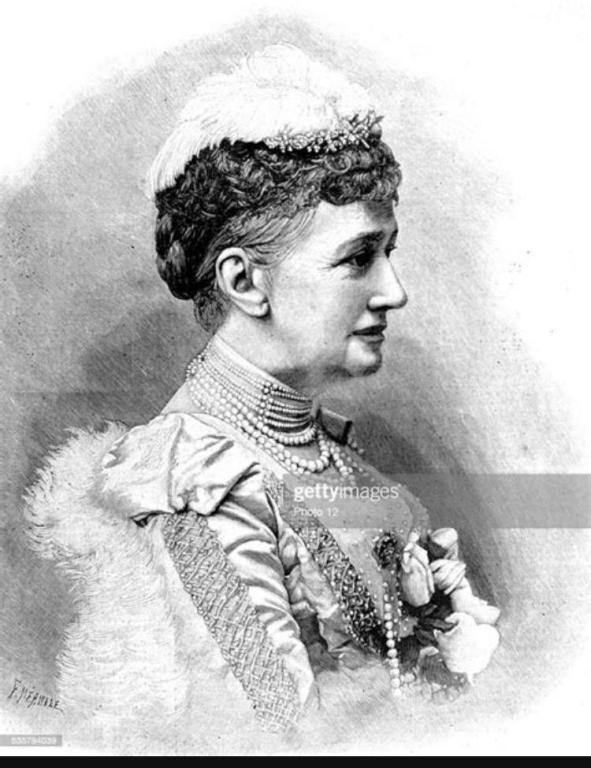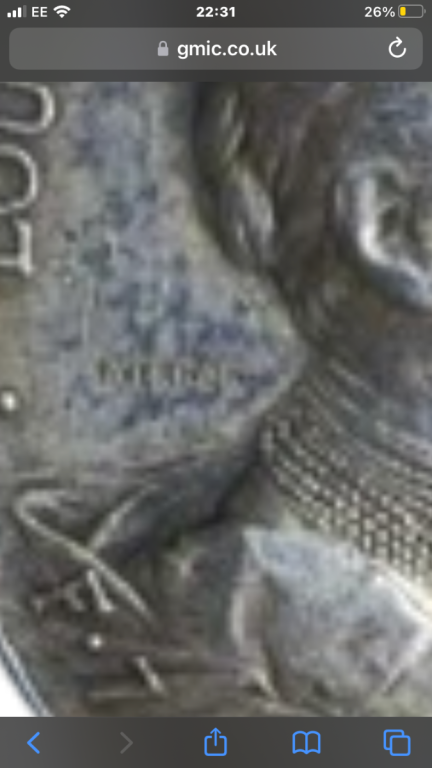-
Posts
1,440 -
Joined
-
Last visited
-
Days Won
20
Content Type
Profiles
Forums
Blogs
Gallery
Events
Store
Everything posted by Farkas
-
-
-
Totally agree. I even have a ‘beginners guide’ to British medal collecting from the 70’s or 80’s and it advises replacing ribbons whenever possible. 🙈 tony 🍻
-
Hi Greg, just came across this topic and the comment below… Serious collectors of these medals try to match the level of aging and patina of the ribbon to those of the medal. I don’t have the knowledge that Simius has but in his haste to be snide he may have forgotten the difference when considering the ribbons on these wound medals… they were meant to be replaced. Though Verwundetenmedaille were only around from 1917, this medal and any other could still have been worn for some time. A well worn wound medal on a newer looking ‘multiple wound’ ribbon is not unusual, acceptable because a ribbon change was required when the unlucky owner got wounded again. If the ribbon is period then I see no problem. 👍 cheers tony 🍻
-
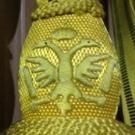
Is this a genuine group?
Farkas replied to bigjarofwasps's topic in Great Britain: Orders, Gallantry, Campaign Medals
Nice looking group, it counts for nothing in reality but ‘it doesn’t look like a put together to me’ was my first reaction 👍 👆 Makes good sense to me. Cheers tony 🍻 Quick Rant. Petty of me I know but nonetheless… I find it a annoying that the NATO medal has precedence over our own, even over the two in places 3&4. I guess it’s the dates that decided that, though I can’t make out the bar on #3. I’d like our own awards first, nato and or foreign at the end, and if the argument is that the NATO medal was hard earned then we should have our own award for recognition of that. As someone who never served I may be wrong but I believe there should be far more recognition for military service. If they can give them out for workers ‘sticking needles in arms’ then why not for more valiant things… Rant over. -
Hi Gents, just a quick heads up for anyone interested in militaria from the Northern Ireland conflict… I just saw there is currently a mess kit for sale on EBay attributed to Colonel Eaton T.D. murdered in cold blood by the IRA in 1976. Col. Oliver Eaton T.D., General Staff and North Irish Horse, killed by the I.R.A. 30/06/1976. Item no : 276115881889 Nowt that special in itself but nice if the troubles are your area of interest. cheers tony 🍻
-
Of course… collection only though, 🤭
-
Hello Gents, I’m happy to post some more pictures if anyone wants to see the cap in detail but for now my question regards the tassel👇 I’ve looked for any mention or picture of any FSC , anything with this feature and I have found nothing. Regs were in constant change during late Victorian era, so irregularity was common especially overseas and particularly amongst the Army Medical Services but there is nothing at all I can see about this. & I’ve read through a lot! At this time the owner had recently joinec (1899) the Indian Medical Service (IMS) and was not an officer in the RAMC. - I believe IMS were considered as being ‘mounted’ infantry, is it related to that? - I know he was attached to ‘11th Madras Infantry’ and ‘66th Punjabis’ between 1899 and 1902, is it related to that? If anyone can explain it to me that would be great but I’d be happy with any thoughts or pointers 🤷♂️ cheers tony 🍻
-
You’re welcome 🍻 The Pitt buttons are post 1895, that is when they moved to Maddox Street. I’d agree with your initial feeling that this is a Victorian/Edwardian worn tunic. As you said yourself, when uniforms changed the officers had some leeway, they purchased their own uniforms. 👇 (I admit I have a lively imagination..,) I’d say this man wore his Victorian style as long as he could before the alterations were done (maybe reluctantly) post 1902. Perhaps he had a role to play in the coronation even… The new King Edward vii was to have a crown usually shown a slightly different shape to the later George crowns but in 1902/3 if commissioned to make some KC buttons I can imagine Pitt&Co would not have an official design to follow as yet. The entire look of the 6 buttons is ‘ropey’ as, I was surprised that they were from a reputable maker at all… But who knows eh 🤷♂️ (😁 I did say I have an imagination 😁) tony 🍻 pS QVC Buttons… If you can tell me what is on the reverse of the Victorian buttons I can maybe narrow down the date a bit more.
-

Scottish Badge Collection
Farkas replied to Terry37's topic in Great Britain: Militaria: Badges, Uniforms & Equipment
I think it is a definite yes Terry. 😊 From 1948 they switched to the square tartan. So these are black backings as this picture is from ww2. No doubt intentional rectangle shaped. And your display already looks awesome… tony 🍻 -
I think I can explain some of it… 🤞 I’ve got two Royal Artillery tunics, one 1900-1905 and the other an older Victorian tunic. The following is based on RA regs but seem to explain your tunic, which is very nice btw. In 1881 and 1891 the officers tunic was changed. The red piping was changed and in 1891 all piping on the skirt/ bottom edge was discarded In 1881 the corners of the collar were rounded and in 1891 the corner of the skirt at the bottom of the buttons was squared. Rank insignia moved around too, collar, shoulder and sleeve lace all were used. Just to say again, this is all RA, the guards would have had their own variations. However… back to your tunic 😊 In 1891, the rear of officers tunics changed. Instead of a single button on either side, the was the addition of the ‘decorative’ pocket flaps. This was a significant change. Braiding and and 3 additional buttons on either side. Looking at yours, it appears the rear panel with the pockets/buttons is an alteration.I would say done to conform with the new regs and assuming it’s period then done in 1891. I don’t see why a modern day owner would change a pre ‘91 tunic to look like a newer one 👍 That then explains the buttons too. They have taken the 6 buttons from the cuffs to use on the tail, So, as the buttons on the cuffs then needed replacements, presumably in 1891, I reckon they might well be theatre made. i’ve several Indian made buttons with random looking crowns. These are period QVC buttons made in India 👇 Can you see anything on the buttons back to confirm or disprove this? 🤞 tony 🍻
-
👍 I clearly can’t argue with that Gents. I know I should just stay in my lane but I meant well 😊 🍻 cheers tony
-
Hi Gents, I’m nothing if not annoying, I apologise but please bear with me, I will leave it be after this, 👍 I can see where I think Vernon would fit but to do that I am taking the ‘black’ (impressed?) parts as the letters, is that how you see it? Myself I would expect the letters to be raised and therefore show as ‘white’. When I am looking at it like that I see WIENER… Anyway…. Good luck gents I’m gonna leave ya to it, 😊 Its a lovely little thing for sure. tony 🍻
-

German ‘Honour Cross’ on a tri-fold ribbon.
Farkas replied to Farkas's topic in Austro-Hungarian Empire
cheers both, it’s not just me then, these aren’t that common are they. When I saw it I wasn’t sure if the ribbon was gonna be legit, but couldn’t remember the last time I saw one of these on any trifold, I had to take the punt, even with 7 quid postage. A neat ribbon and good looking kreuz too. tony 🍻 🏴🇬🇧 -

Question about - Pro Patria - Ehrenzeichen der Ehrenlegion.
Farkas replied to Farkas's topic in Austro-Hungarian Empire
Hi Gents, I thought I might add this here. An Austrian kriegervereine association piece with a “St. Lambrechten” clasp/link for veterans of the 1914-18 war. Sankt Lambrech is in Styria, Tyrol I believe. Seems popular for skiing nowadays. There is still today a memorial to the fallen of both wars to be found in the abbey there. tony 🍻 -
(belated) Thanks Gents, your positive vibes are appreciated… I’m still enamoured with it! cheers tony 🍻
-
Hi Gents, though a German medal from the 30’s doesn’t really belong in this section, I thought I’d sneak it in 😉 I was lucky enough to nab this the other day, it came from an Austrian seller and was just as cheap as these crosses normally are, which surprised me bearing in mind the ribbon. From Wikipedia : “ By a decree dated 30 November 1938, the State Minister of the Interior introduced these awards into the Ostmark (the name of Austria after it was annexed by Nazi Germany). By 1940, it had also been approved for persons of German heritage from seized lands of the Sudetenland, Czechoslovakia, Danzig, Saar and Memel.[1]Awarding of the cross to war participants of German heritage continued after the deadline for applications had closed within the previous boundaries of Germany. Such Honour Crosses were still being awarded as late as 1944. For all attached military personnel outside these regions, the Führer, through the ordinance of 30 June 1942, had already ordered approval of these awards.” Its the first one on a trifold that I’ve had the good fortune to pick up. 😊 cheers tony 🍻
-
Hi Rusticalex, not seen this thread before somehow… what a great read. I notice in the above one you question whether they are all his. I presume you mean the 2 ‘grenades’? Though most commonly associated with the Royal Artillery and Royal Engineers they are also the emblem for ‘fusiliers’. I found this I would be happy to say that all those are his. cheers tony 🍻
-

35 Karl Truppen Kreuz and counting. KTK.
Farkas replied to Farkas's topic in Austro-Hungarian Empire
Shocking! 😊 -

Certificate of the Service ..
Farkas replied to Sandy Reed's topic in Great Britain: Research, Documentation & History
Well done Sandy that’s awesome… If you’d let us know what you find I’d be very interested. cheers tony -

Certificate of the Service ..
Farkas replied to Sandy Reed's topic in Great Britain: Research, Documentation & History
Hello again! A bit more to add… I’m going to try and summarise a bunch of stuff I’ve been reading. It’s easier for me to rattle off a ‘list’ 👍 First, all RNavy records including your Fathers have survived and are available upon request provided that a death certificate or similar proof is supplied. His service number is P for ‘home base’ Portsmouth and the ‘JX’ is for ‘Seamen and Communicators’. His AB is indeed for Able (bodied) Seaman but as you thought it appears he was in fact a Commando. The Royal Marines have been around for 100’s of years. Commando units though, both of the army & navy, were only first created in ww2. As I understand it… The Royal Marines created their own separate commando units in 1942 but there were also ‘Royal Naval Beach Commandos’ The courses/qualifications your Father lists ie ‘small arms’ & ‘pre landing specialist’ are consistent with and would qualify him for this role. https://www.commandoveterans.org/RoyalNavalBeachCommandoMemo The RNBC not Royal Marines Commando role is consistent with his late war Far Eastern RN deployment and the early 1946 record cut off point, despite you knowing he served on for several years post war. All this and more is going to be in his records. Once you have them you will have the facts about his service. If you still then want to understand the context and attach background to his story you can. The unchallenged best source of information re units and their operations for you is going to be www.commandoveterans.org Everything about each unit and theatre of operation is on there. But first you need to get his records… https://www.gov.uk/get-copy-military-records-of-service/apply-for-the-records-of-a-deceased-serviceperson I genuinely think your Father had an interesting war. I’m sure you can find the answers you are looking for. Hopefully you share some with us on here… please just ask if you need a hand. best wishes tony 🍻 🏴🇬🇧 -
Hi Gents, I found a printed version of this image from 1898. Queen Louise of Denmark (1898) Denmark - 1898, Queen Louise of Denmark. In "Le Journal illustré", 10-16-1898. The signature looks to me like F. Pernile. However this is not the name on the medal/medallion.. which I believe is Weiner. After some digging I believe the engraver is one of the Wiener brothers, only Jacques was still alive in 1898, albeit in his eighties, so most likely him. ‘JACQUES WIENER (1815–1899) was the oldest of three brothers who were to become famous as medalists. Born in the Rhineland of Hungarian immigrants, he was apprenticed at the age of 13 to his uncle L. Baruch, a fine engraver in his own right. The two signed some earlier medals jointly. At the age of 30 Wiener was the first to conceive the idea of engraving in precise detail the exterior and interior of a monument on the obverse and reverse of a medal. He engraved with great delicacy ten medals of famous Belgian churches. This he followed with a series of 41 medals, issued between 1850 and 1865, illustrating the most famous European buildings. He also engraved the first Belgian stamps, and for many years was head of the government plant issuing these stamps.’ ‘Leopold (1823–1891) studied with his older brother Jacques and then became a pupil of David d'Angers in Paris. In 1847 he returned to Belgium and started engraving a series of large historical medals which commemorated contemporary events and became very popular. In 1864 he was appointed first engraver to the Belgian mint, holding the post until his death. He was responsible for all the currency of Leopold II – some 150 pieces. At the same time he continued striking medals. He also had a considerable reputation as a sculptor; several of his monumental works still adorn public places in Belgium.’ ‘Charles (1832–1888) was the third and youngest of the Wiener brothers and, perhaps, had the most brilliant career. He studied at Brussels and Paris where he was a student of Oudiné. In 1865 he settled at The Hague as engraver to the king of Holland, but moved to London, where he was assistant engraver at the Royal Mint. He then went to Lisbon as chief engraver of the Portuguese coins. Returning to Brussels in 1867, Charles devoted himself to medals, which he produced in large number, some in conjunction with his brother Jacques. His English pieces have best withstood the test of time. ‘ Given the absence of any record or even image of this piece yet it’s obvious high status from design to production of miniatures I’m inclined to say it wasn’t ever awarded to the masses, perhaps only to a small select group. A very nice thing… tony 🍻


